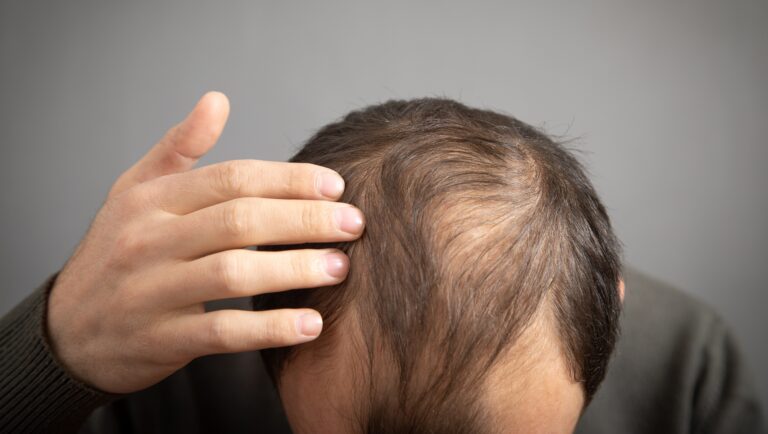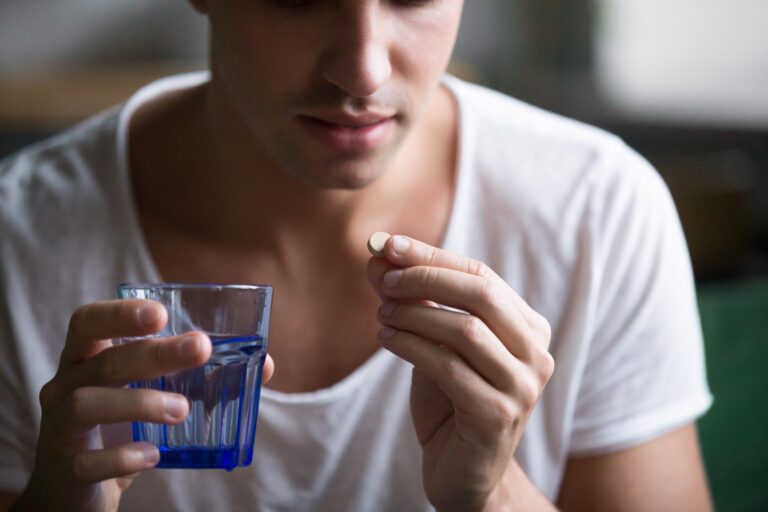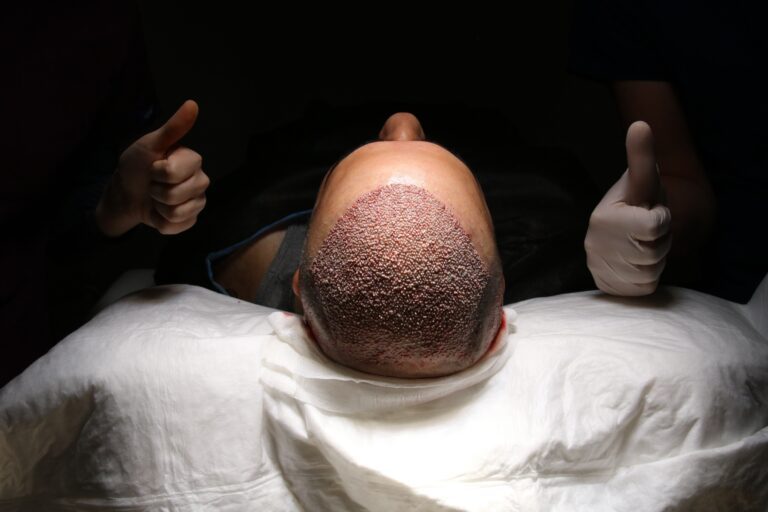Hair Transplant Scabs & Crusting: Everything You Need to Know
Hair transplantations are one of the most effective ways to combat hair loss. However, many factors contribute to the success rate of this process.
One of these factors is post-operative care.
In some cases, hair scabs and crusting might appear after the procedure. So, what are hair transplant scabs? Why do they happen? And should you be worried?
Have no fear! Today’s article will shed some light on these questions and more. So, keep reading to find out everything you need to know about hair transplant crusting and scabs.
What Are Scabs and Why Do They Appear?
Scabs are a normal part of the healing process. So, it’s natural to see scabs forming after your hair transplant procedure, and they’re nothing to worry about.
After a hair transplant surgery, tiny wounds start healing and creating scabs, which turn into a layer of crusted skin. Typically, this can happen around one or two days after the surgery.
The scientific explanation behind it is that whenever any part of your skin is injured, protein, calcium, and vitamins in your bloodstream rush together to try and close the wound.
This crust-like layer plays a huge role in minimizing blood loss and speeding up the healing process.
When this layer first forms, it’s still slightly soft to the touch. Yet, it dries up and becomes harder as the days pass, helping the underlayers of the skin heal faster
These clots also act as a barrier to prevent harmful microorganisms from entering the body via the open wound. Not to mention that they play a big role in securing the newly planted hair follicles in place.
What to Do When Scabs Start to Appear?
As previously mentioned, scabs are a natural part of the healing process. So, you should simply adhere to the post-operative care instructions, and the scabs will fall off on their own.
How Long Do Scabs Remain on the Scalp after Hair Transplant?
Scabs usually take around one to two weeks to fall off. This is due to the small size of the wounds.
However, in the case of follicular unit transplantation (FUT), it can take a little longer as the wound size is slightly larger in size.
Other factors can also affect how long scabs remain on your scalp, including the following:
- The number of newly embedded grafts
- The size of incisions made
- How densely packed the grafts are
Is Itching a Normal Part of the Scabbing Process?
Itching is another sign of healing. Everything that’s going on in that affected area stimulates the nerves, which your brain interprets as an itching feeling.
Yet, you should avoid scratching your scalp at all costs. While it can give you temporary relief, it can permanently damage your newly transplanted hair. Plus, scratching can dislodge the grafts, delay the healing process, and increase the risk of infection.
Can I Get Rid of Scabs and Crusting After My Hair Transplant?
Many people often ask, “When can I remove scabs after my hair transplant?”
The answer to this question is a bit complicated. It mainly depends on when and how you want to remove these scabs and crusts.
Ideally, it’s best to wait until the scabs fall off on their own. After some start to fall off, you can gently massage your scalp to help get rid of the rest faster.
Yet, remember to never scratch your scalp, even during the massaging process. We understand that your scalp might feel itchy, and you might be tempted to scratch it. However, if you stick to gentle massages instead, they can go a long way in reducing that irritating feeling of itchiness.
In any case, you shouldn’t remove the scabs until they start falling off. By this point, the skin underneath has had time to properly and safely heal.
How to Remove Scabs after Hair Transplant
The following steps will guide you through the process of softening the scabs:
Step 1: Apply a Mild Shampoo
Many clinics provide you with an aftercare package that contains a suitable shampoo. If you don’t have one, it’s best to consult your dermatologist about suitable products you can use after the procedure.
Also, try to avoid using any type of harsh cleanser, as it can put a lot of stress on the newly transplanted follicles and slow down the healing process.
Step 2: Rinse Your Hair Using Soft, Warm Water
A soft, warm stream of water is your ally after a hair transplant procedure. Also, the water’s intensity and warmth shouldn’t add too much stress to your scalp.
If you have a non-adjustable shower head, you can use a cup or a bottle of water to wash your scalp and adjust the intensity accordingly by hand.
Step 3: Gently Massage Your Scalp
Using the mild shampoo and the soft water stream, gently massage your scalp with your fingers. Avoid applying too much pressure on your scalp.
The goal of this step is to soften the scabs, but not directly remove them. Therefore, you need to be as gentle as possible.
Do Scabs and Crusting Affect Hair Follicles?
Scabs can keep newly embedded grafts in place. Additionally, they act as a barrier to prevent harmful bacteria from entering the wound.
Generally, they don’t affect hair follicles or the skin. However, if they persist longer than needed, they might affect hair follicles. Hence, if you still have scabs after two weeks, you should consult your dermatologist.
One thing worth mentioning is that you shouldn’t be alarmed if you notice a few hair transplant scabs falling off with hair strands. This is a normal part of the process.
How to Get Rid of the Itchy Scalp Feeling?
We understand that it’s hard to ignore the itchy feeling after the procedure, so here’s what you can do to help ease that feeling:
1. Medicated Shampoo
You can ask your doctor to recommend a medicated shampoo that can help reduce the itchiness. In fact, some clinics will provide you with this shampoo as part of their post-operative care package.
2. Antihistamines
Your body usually releases histamine at the implant site, which can cause an itchy feeling. Taking antihistamines can significantly reduce the desire to itch at your scabs.
3. Moisturizer
Keeping your scalp nourished and well-moisturized can lower the urge to scratch your scalp. Ask your doctor to recommend a suitable moisturizer to you after the surgery.
Essential Scab Removal and Post-operation Tips
Here are some essential tips that you need to follow after the transplantation procedure and during the scab removal process:
- Don’t attempt to remove the scabs before they start falling off on their own.
- Avoid touching your scalp for the first week after the procedure.
- Follow the post-operative care instructions.
- Don’t scratch the scab, but gently massage the area instead.
- Avoid prolonged exposure to dirt and sweat.
- Use a suitable mild shampoo and warm, soft water to rinse your hair.
- Some vitamins and painkillers can do more harm than good. So, consult your doctor before administering any medication after the surgery.
- Avoid smoking, at least during the first week after the procedure, as it can delay the healing process.
- If the scabs don’t go away on their own after two weeks, contact your doctor.
- A saline spray can help with the scabs and reduce the itchy feeling.
FAQs
What happens if I scratch the scabs after the transplant?
If you scratch the scabs, it’ll highly likely reopen the wound. In turn, this will cause the wound to bleed and delay the healing process.
Additionally, this can increase the risk of infection and prominent scarring. Not to mention how it might cause possible pain and swelling.
What should I do if the scabs don’t fall out?
If hair transplant scabs aren’t falling off two weeks after the surgery, and the skin isn’t healing, you should contact your dermatologist. In the meantime, don’t attempt to remove the scabs if they aren’t falling out on their own, as it can do more harm than good.
When is it okay to scratch my scalp after a hair transplant?
It’s never safe to scratch your scalp during the first month. As a result, the itching and the urge to scratch your scalp will gradually decrease.
After those initial four weeks, around 6–12 weeks after the procedure, new hair follicles will begin to grow. This is when it becomes somewhat safe to scratch your scalp
Wrapping Up
Hair transplant scabs are normal. It’s part of the natural healing process. Scabs not only stop the bleeding but also protect your skin from bacteria and allow the wounds to heal.
Typically, scabs remain on your head for one to two weeks after surgery. So, it would help if you didn’t attempt to remove the scabs before they start falling out on their own.
In fact, experts recommend you don’t directly remove the scabs. Instead, massage your head with shampoo and rinse with warm water to help the scabs fall off faster. If the scabs don’t go away on their own after two weeks, contact the clinic where you had your transplant done.







